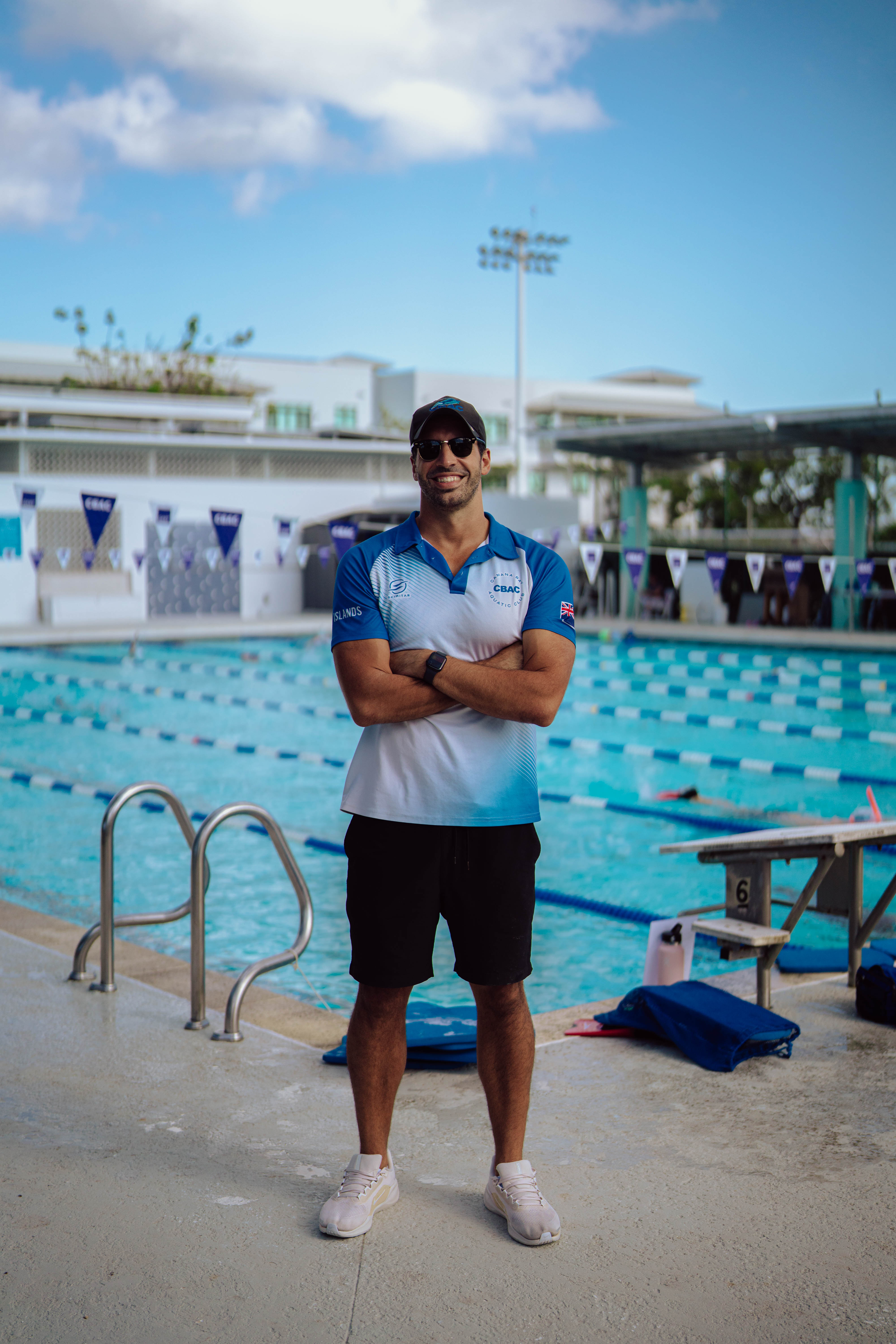
Camana Bay Aquatic Club (CBAC) recently introduced an innovative training tool that promises to revolutionise how coaches monitor and train their athletes.
Using Polar OH1 heart rate monitors in swimmers' caps, CBAC aims to provide real-time, accurate heart rate data, enhancing training effectiveness and performance.
The Polar OH1 uses an optical sensor similar to those found in smartwatches.
"It connects directly to my iPad, allowing me to monitor the athletes' heart rates live during training sessions," CBAC coach Dexter Bligh said.
Introduced this season, the heart rate monitors have already shown promising results. The technology not only captures real-time data but also summarises it for a comprehensive look at each training set.
"Anytime you introduce a new piece of equipment, it increases engagement from the athletes," Bligh said.
This new tech tool has motivated swimmers to delve deeper into the science of their training, he said, while also providing coaches with insights into athletes' recovery and daily capacity for workouts.
"If a swimmer previously completed a set at 155 beats per minute (BPM) and now shows 175 BPM under the same conditions, it prompts discussions about factors like illness, sleep or stress," Bligh said.
Such insights foster meaningful conversations between coaches and athletes, improving training strategies and athlete well-being. The heart rate monitors are crucial for tailoring training to individual physiological zones.
"Each set I design targets a specific physiological system, such as aerobic capacity or lactate tolerance," Bligh said.

By measuring heart rates, coaches can determine if the athletes are achieving the desired workout intensity. If a swimmer's heart rate is below the target zone during a threshold set, for instance, changes in the workout may be needed.
This technology marks a significant improvement over previous methods, which involved swimmers manually checking their pulses post-exercise — a process prone to inaccuracy and limited data collection.
"Now, having a constant view of the athletes' heart rates throughout the set provides much more valuable information to assess the effectiveness of my programme," Bligh said.
"CBAC is committed to providing a world-class training environment."
Looking to the future, Bligh said he's optimistic about the impact of continued technological integration on CBAC's training programmes.
"With the resources we continue to provide, I'm excited to see what the future has in store for these hardworking young men and women," he said.
As CBAC continues to integrate cutting-edge technology into their training regimen, the club not only enhances its programme but also raises the bar of competitive swimming training in the Cayman Islands.
This article was first published in the April/May 2025 print edition of Camana Bay Times.


